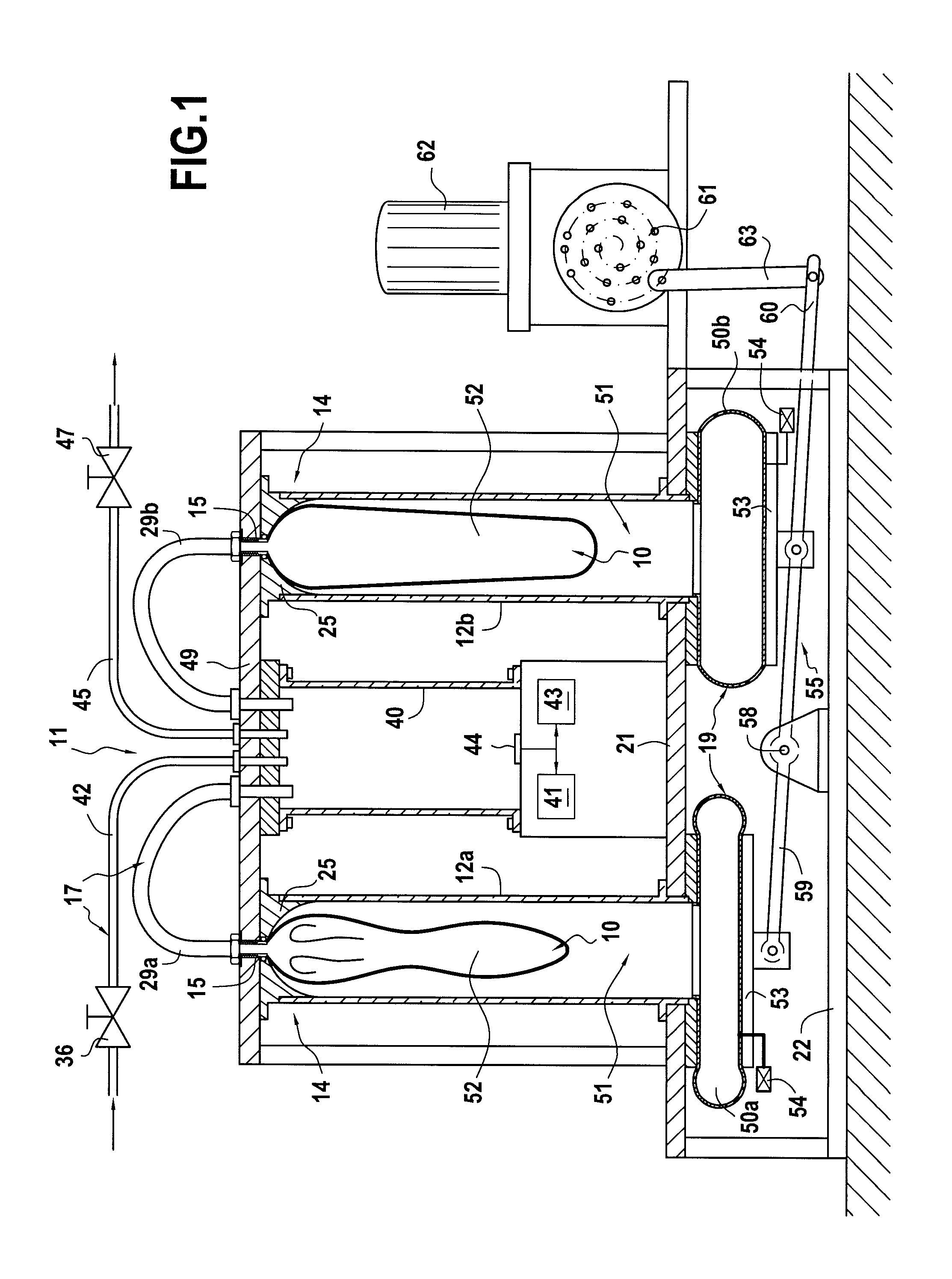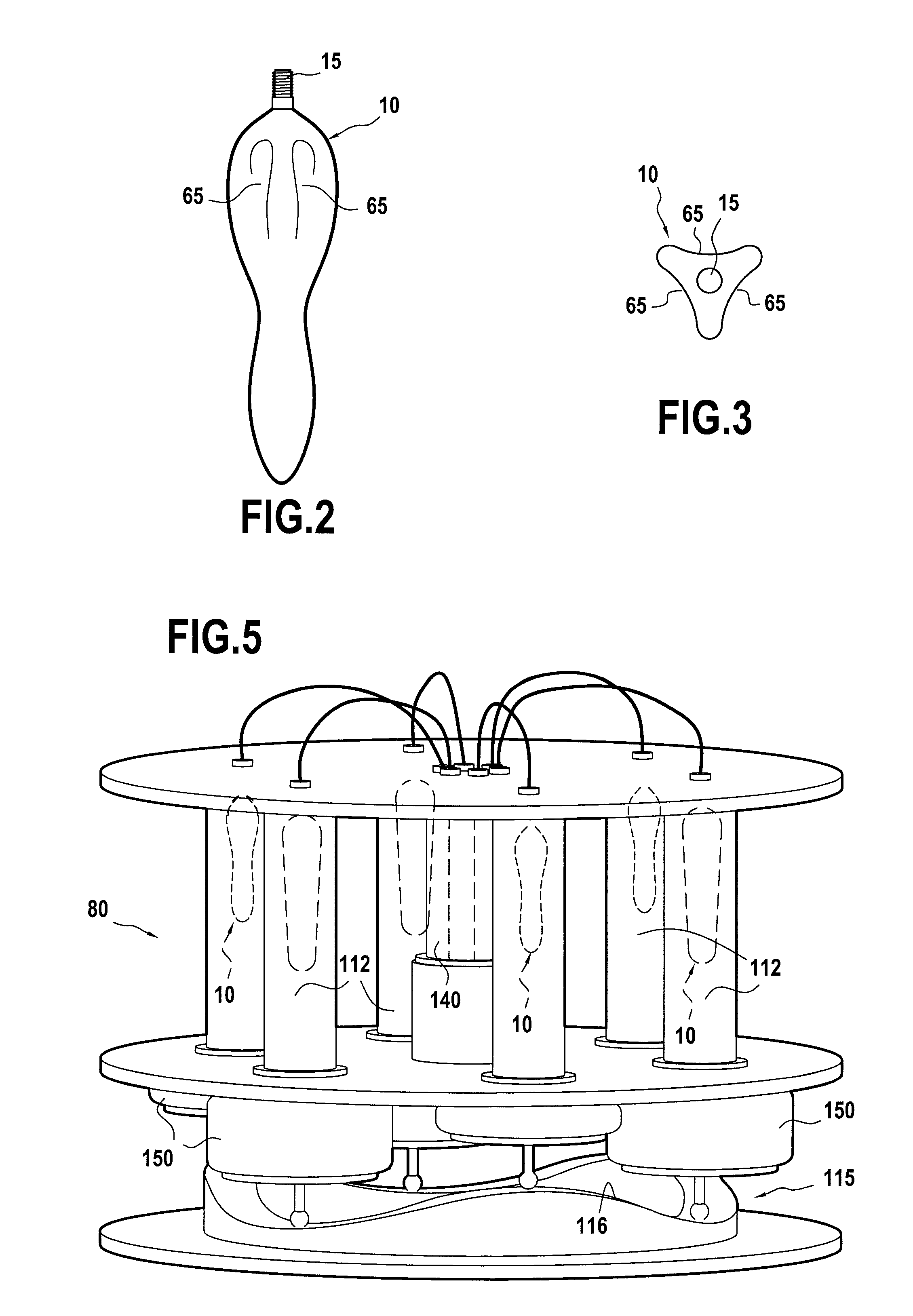Test device for testing flexible separators
a test device and flexible separator technology, applied in the direction of machine part testing, withdrawing sample devices, material strength testing using repeated/pulsating forces, etc., can solve the problem of limiting the rate at which deformation cycles can alternate, the duration of reliability tests for a large number of cycles is therefore very long, and the duration of testing is short. , the effect of simple and inexpensiv
- Summary
- Abstract
- Description
- Claims
- Application Information
AI Technical Summary
Benefits of technology
Problems solved by technology
Method used
Image
Examples
Embodiment Construction
[0027]The device 11 shown in FIGS. 1 to 3 receives two identical flexible separators 10 in the form of “bladders”. In this example, it comprises two rigid chambers 12a, 12b that are generally cylindrical and tubular, each suitable for receiving one separator 10. At its top end, each chamber 12a, 12b includes a sealed connection arrangement 14 enabling a tubular endpiece 15 of the separator 10 to be fitted in leaktight manner to said top end. The device 11 may also have means 17 for enclosing a gas at a predetermined pressure within the separators (i.e. inside the “bladders”) and means 19 for moving a liquid cyclically into and out of each rigid chamber 12a, 12b, i.e. on the outside of the separator engaged therein. This cyclical motion of the liquid has the consequence of causing the separators filled with gas under pressure to describe deformation cycles that makes it possible to evaluate their lifetime.
[0028]In the example, both rigid chambers 12a, 12b are fastened vertically on a...
PUM
| Property | Measurement | Unit |
|---|---|---|
| pressure | aaaaa | aaaaa |
| pressure | aaaaa | aaaaa |
| pressure | aaaaa | aaaaa |
Abstract
Description
Claims
Application Information
 Login to view more
Login to view more - R&D Engineer
- R&D Manager
- IP Professional
- Industry Leading Data Capabilities
- Powerful AI technology
- Patent DNA Extraction
Browse by: Latest US Patents, China's latest patents, Technical Efficacy Thesaurus, Application Domain, Technology Topic.
© 2024 PatSnap. All rights reserved.Legal|Privacy policy|Modern Slavery Act Transparency Statement|Sitemap



